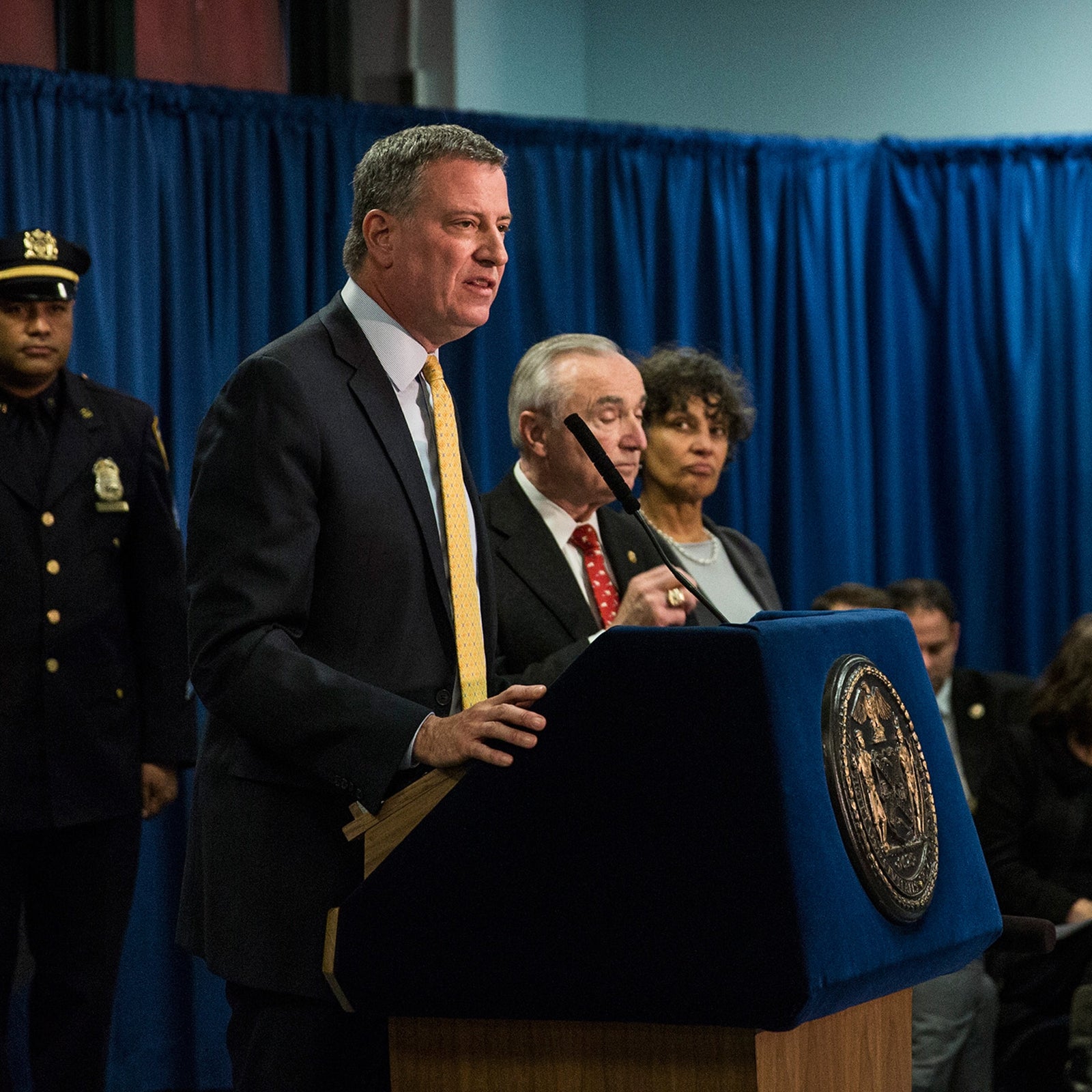It’s been a brutal summer in New York City and not because of the heat. On Monday, July 29, Em Samolewicz became the eighteenth bicyclist to die in the city this year. She was riding on 3rd Avenue in Brooklyn when a driver opened the door of his van into traffic, causing her to crash. The driver of an 18-wheeler then ran over and killed her.
In 2014, Mayor Bill de Blasio launched the Vision Zero initiative with the goal of reducing traffic deaths to zero by 2024. Five years in and our streets are as broken as ever. In a maddening bit of irony, the van driver who doored Samolewicz that he’s a cyclist too, and that he’s also been doored. Even more infuriating, when an New York Police Department spokesperson whether the van driver had been charged, they replied, “It’s not a crime to open your car door.”
Of course it to open you car door into traffic in New York, and so the spokesperson subsequently explained that they were merely “joking around.” (The NYPD have since .)
In 2018, ten cyclists died in New York City. In 2019, we hit that same number by April. On July 9, with the death toll at 15, cyclists held a in Washington Square Park. By this time, Mayor de Blasio had finally acknowledged that Vision Zero was in crisis and announcing an NYPD crackdown on dangerous driving. He also promised a new street safety plan for cyclists.
The first step in this new push to protect cyclists was the , a three-week NYPD crackdown from July 1 through 21 that focused on driver violations such as blocking bicycle lanes. Many bike advocates were about how effective the crackdown would be, and by the end, it seemed that skepticism had been borne out; while police did issue significantly more tickets to bike lane blockers during the initiative, compared to 2018. One noteworthy event that took place during the crackdown was an NYPD officer running down a Citi Bike rider in an East Village bike lane. , the Citi Biker had run a red light and not stopped when asked, and so the officer ran him off the road “for [his] safety.” (Mayor de Blasio said the officer’s actions .)
Overall, the new plan, called Green Wave, comes off more as a repackaging of a bunch of already released material, with a few bonus tracks to make it seem like a ground-up project.
Of course, nobody was particularly surprised that the Bicycle Safe Passage Plan had taken some farcical turns. (Cops running cyclists off the road, NYPD vans from loudspeakers, and so forth.) However, the cyclists of New York City were considerably more invested in the new street safety plan the Mayor had promised. Sure, the Bicycle Safe Passage Plan had turned out to be a pretty lame single, but everybody still wanted to hear the full album. Finally, on Thursday, July 25—more than three weeks since his initial pledge to take action, during which time drivers managed to kill two more cyclists, bringing the death toll up to 17—de Blasio to announce the details of “”
So how did the city do? Well, let’s just say Mayor de Blasio and the Department of Transportation under Commissioner Polly Trottenberg didn’t exactly emerge from the studio with the livable streets equivalent of “Pet Sounds.” Overall, the Green Wave comes off more as a repackaging of a bunch of already released material, with a few bonus tracks to make it seem like a ground-up project.
This isn’t to say the Green Wave doesn’t contain some good stuff. For example, the title track refers to . That means for the first time, the DOT will experiment with implementing it for cyclists. This would mean a rider cruising at 15 miles per hour would not be forced to stop every block and lose momentum over and over again because all the lights are timed for cars.
Furthermore, advocates in New York City have long been frustrated by the pace of bike lane expansion and the disjointed nature of the cycling network. To that end the DOT will build 80 new protected bike lane miles by 2021 and establish a fully-connected, citywide protected bike network by 2030. They’ll also work with the City Council to “streamline Community Board notice and presentation requirements”—which is crucial, as the current process often involves months and even years of delay as retrograde boards fight vital safety projects in order to preserve their free on-street parking, or simply because it doesn’t conform to their stunningly provincial sensibilities.
(In 2017, Queens Community Board 4 member Ann Pfoser Darby “once Trump removes all the illegals from Corona, there won’t be anybody to ride the bike lanes.” And in May of this year, at a meeting about a bike lane Queens Community Board 7 member Kim Ohanian Vision Zero “a joke, said that people who talk on their phones while crossing the street “deserve to get run over, and because it would go “in front of my house.”)
Even so, there’s little in the Green Wave that hasn’t already been underway for quite some time, or that merits the “audacious” descriptor de Blasio used repeatedly during the press conference. The had already been announced; the allowing cyclists to proceed with the pedestrian walk signal had already been approved by the City Council. The prospect of a citywide protected bike lane network is fantastic, but it’s also exactly the sort of project the city should have announced back in 2014 and completed by now. Audacious would have been announcing that certain parts of the city will become car-free; audacious would have been closing a lane of car traffic on the Brooklyn Bridge and turning it over to bikes; audacious would have been instead of rebuilding it as a bold statement that the primacy of the car is over.
Is the future of cycling in New York City hopeless? Far from it. While not even remotely audacious, the Green Wave still represents an ongoing municipal commitment to cycling. And while the NYPD may drivers for doorings or , the next crop of mayoral hopefuls are determined to “” and of NYPD enforcement. Most tellingly, when Commissioner Trottenberg stated during the press conference that the Green Wave would result in the removal of “thousands” of parking spaces, she was met with applause. (She reacted with surprise, a sign that the city’s administration may be underestimating the degree to which people are fed up with cars.)
We’ve got a lot left to do to make the streets of New York City safe, and frustratingly little of it is articulated in the Green Wave. But we’ve come a long way as a cycling city over the years, and the smart money is still on bikes.


